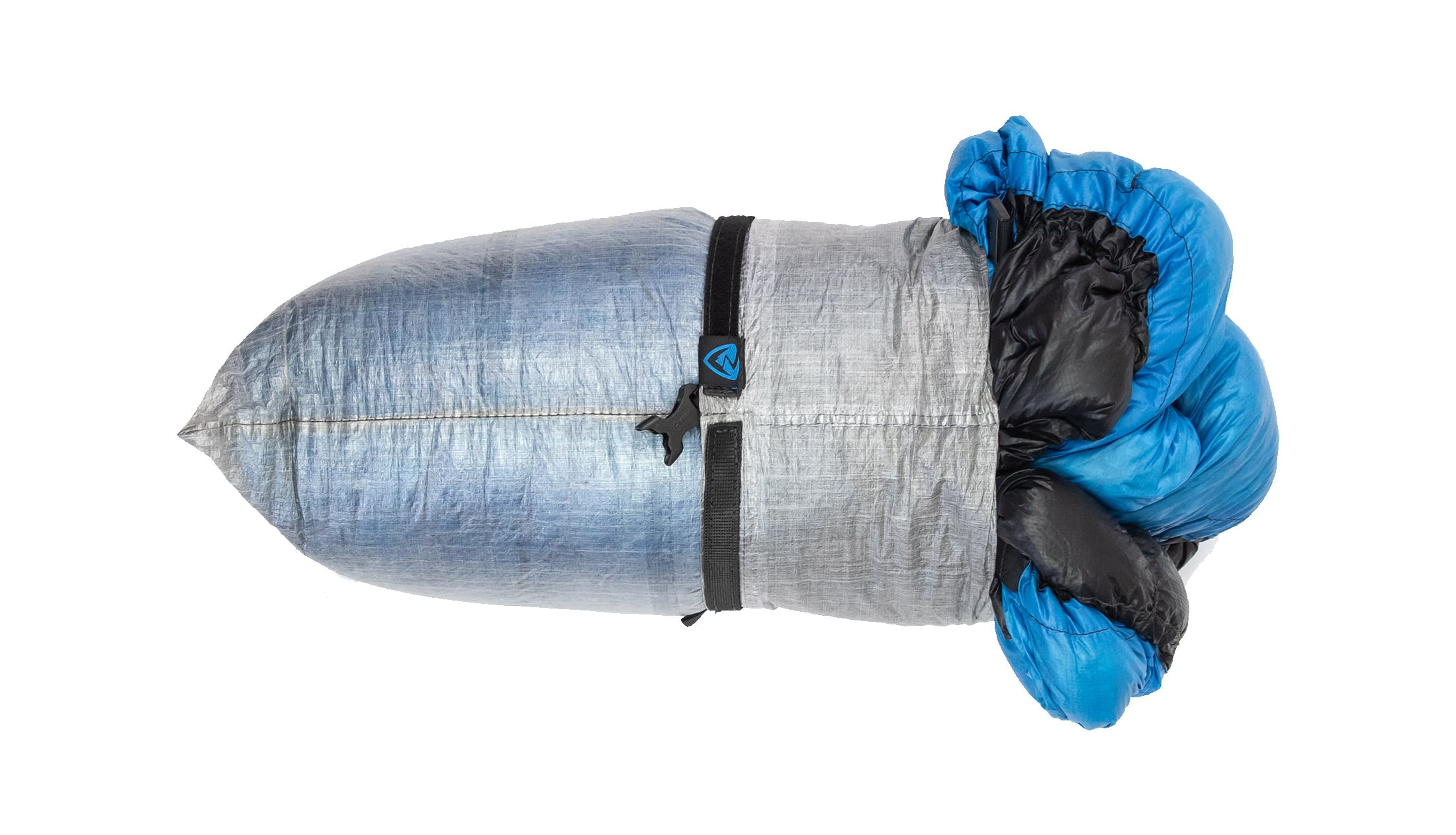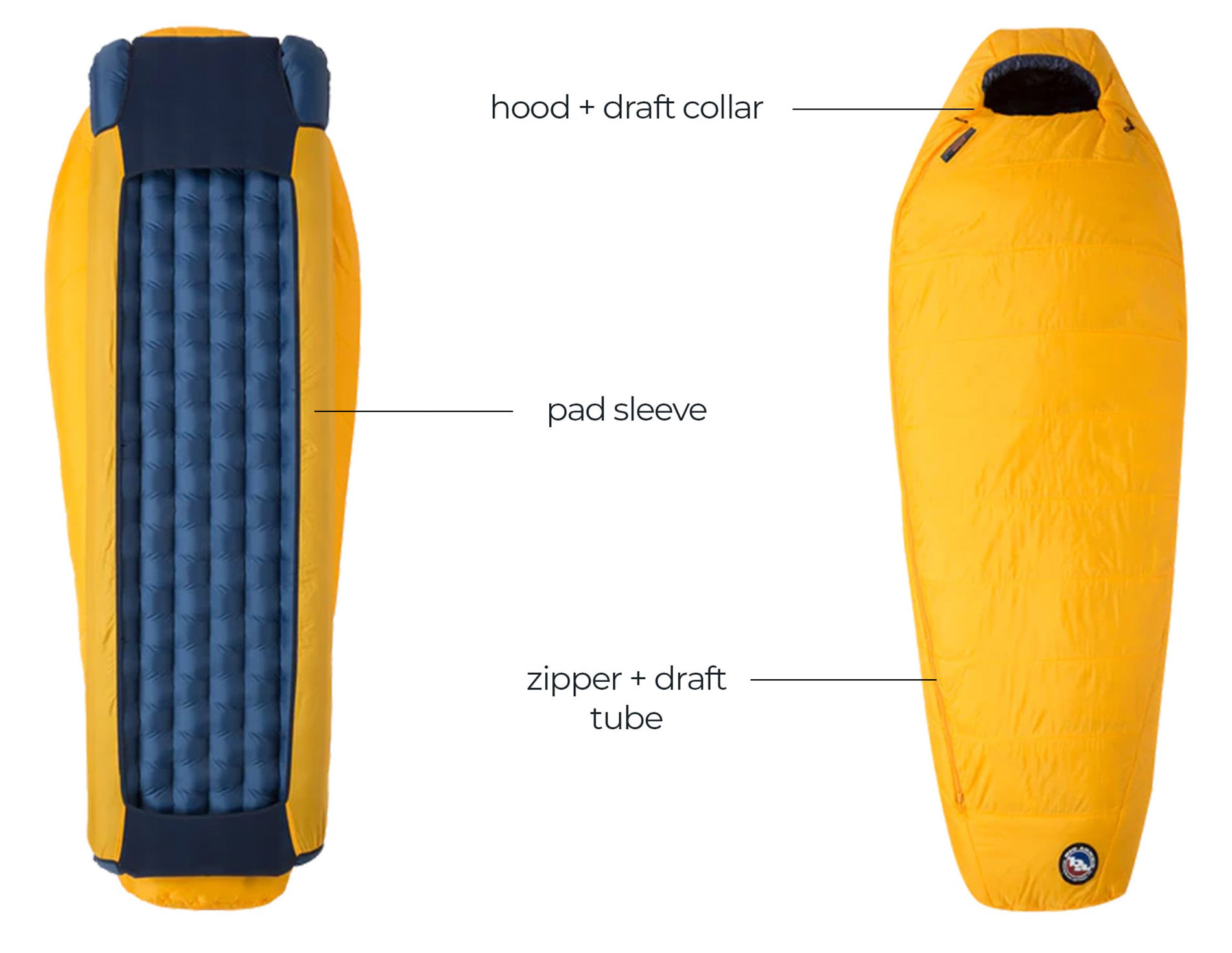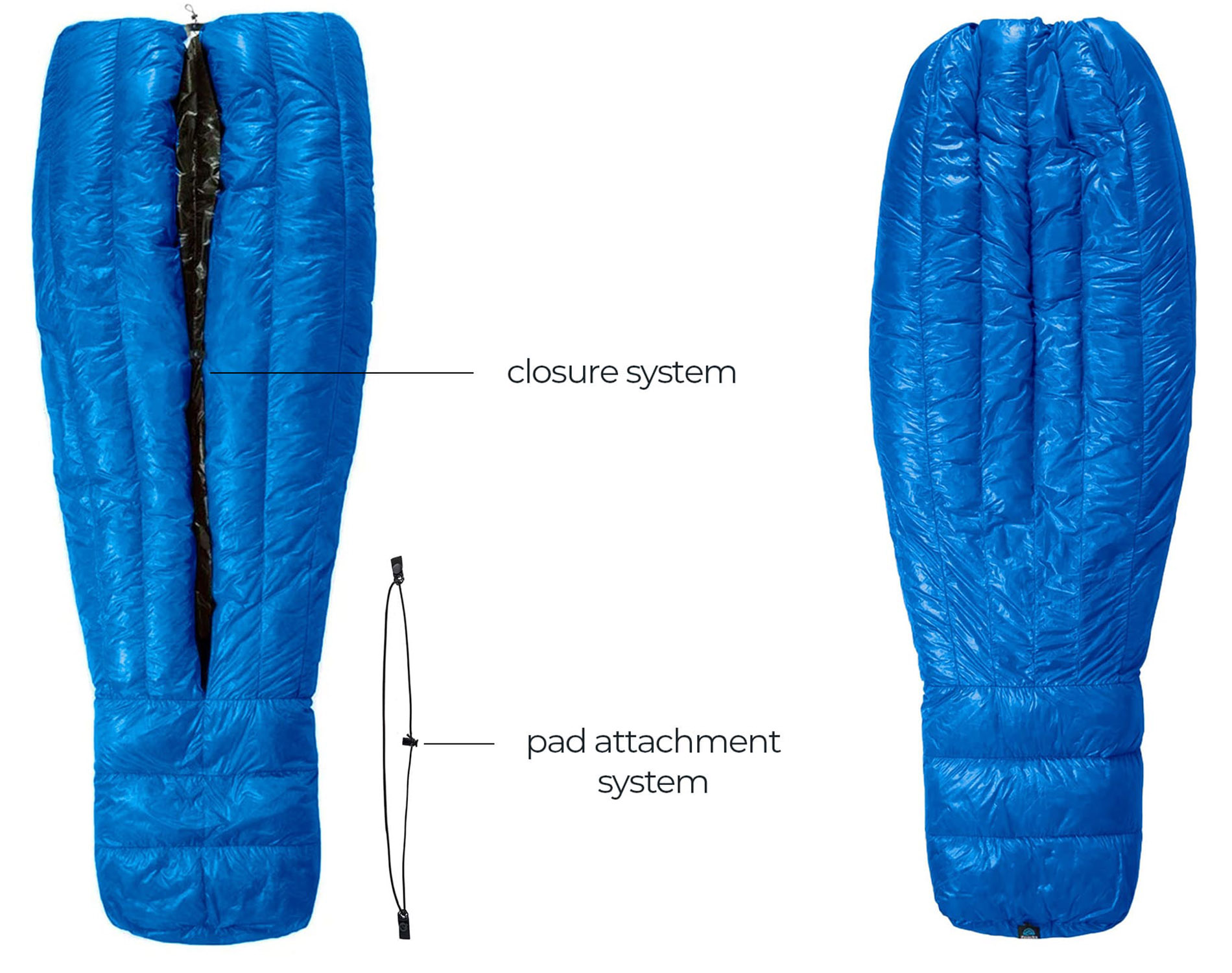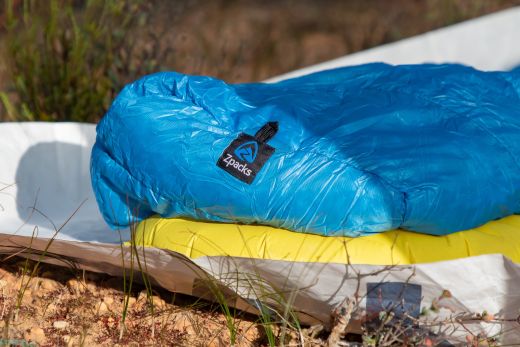For thru-hikers, ultralight backpackers, and bikepackers, upgrading to a lightweight sleeping bag or quilt is one of the most effective ways to shave a significant amount of bulk and weight from their kit. But choosing between a sleeping bag and quilt is no easy decision as both have unique advantages and disadvantages. This article goes into these differences in detail so that you can make a more informed decision on which is likely to be better for you.
Note: This is only one of five articles that look at the different parts of a sleep system. If you are building a sleep system from scratch or only looking for a new quilt or sleeping bag, I highly recommend reading my article on how to calibrate your sleep system next. If by then you know whether you want a quilt a sleeping bag, you can also read my gear guide on sleeping bags or quilts for a more indepth look at the decisions involved in choosing this all important piece of kit.
Quilts vs sleeping bags
If it’s essential that you have the lightest kit available, a down backpacking quilt is the obvious choice. But if you don’t need to achieve a sub-nine-pound base weight, the choice between a sleeping bag and quilt is not quite so straightforward. It’s still possible to go fast and light when carrying a slightly heavier sleeping bag (1.5 pounds is still pretty light), and it would be wise to consider the many other differences before making a decision.
Bulk and weight
By containing less material – the insulation that would be directly underneath the sleeper is messing – and doing away with zips and other features, quilts weigh less (20 to 30% less) than equivalent sleeping bags filled with the same type of insulation. And they pack smaller. This reduced weight and bulk makes quilts very popular with the fast and light crowd and anyone who prioritizes low weight.
Freedom of movement
With an open underside, quilts can expand and allow for greater freedom of movement. This is especially beneficial for side sleepers who can feel restricted in a mummy sleeping bag. Even if you choose to clip the underside of a quilt closed (most have two or three clips for this purpose), you will typically still have a little more wiggle room than you would in a zipped-up mummy bag. Sleeping bags do, of course, also come in other, less restrictive shapes (semi-rectangular), but these are heavier and more bulky.
Ease of use
To retain heat properly, a quilt has to be attached to the sleeping pad with straps, a system that can involve a little extra fiddling. On the other hand, this helps prevent the sleeper from sliding off the sleeping pad, as can happen with a sleeping bag that doesn’t have a pad sleeve. In short, a quilt’s biggest downside can also be an advantage depending on your sleeping habits and preferences. In recent years, the development of more user-friendly pad attachment systems means there’s less fiddling and better heat retention.

Ventilation
With an open underside and no hood, a quilt is just better at ventilation. Although this can be useful on warmer nights when you might want to retain less heat, it’s also useful in colder temperatures. One of the drawbacks to having a hood, is that it can result in the buildup of moisture, especially if the sleeper has a habit of turning over in your sleep and finding themselves breathing face-down into the hood. This isn’t an issue with a quilt since it doesn’t have a hood.
Warmth
Because quilts don’t have hoods, they can only be so warm. So, if you’re going to sleep out in temps lower than 20ºF (-7ºC), you will probably need a sleeping bag. Also it’s important to note that quilts, unlike sleeping bags, aren’t ISO-rated. And while some manufacturers test and rate their quilts and sleeping bags using the same standards, other brands use rating systems that exaggerate a product’s insulating abilities by up to 10 degrees. If you go with a quilt, you should familiarize yourself with the brand’s rating system or choose a quilt that is rated 10 degrees warmer than you need – just to be safe.
| Sleeping bag advantages | Quilt advantages |
|---|---|
| can be warm enough for below freezing | light and compressible |
| simpler | more ventilation, less moisture buildup |
| more wiggle room for side sleepers |
Sleeping bag and quilt features
These are the most important features of a sleeping bag or quilt – those that will keep you warm and comfortable. All other factors are secondary to these priorities.
Features found only on sleeping bags
Of the four features listed below, only one – the zipper – is found on all sleeping bags. Hoods, draft collars, and draft tubes are often missing from minimalistic bags designed for warmer temperatures, and only a few brands (Big Agnes, Sierra Designs and Nemo) make sleeping bags with pad sleeves. What this means is that sleeping bags come in a wider range of shapes and styles than backpacking quilts. If you decided to go with a sleeping bag, you would need to think a little harder about what features you’d want to meet your needs.

Hood
Much of your body heat is lost through your head, and while you can prevent some heat loss by wearing a warm hat, there’s no beating the insulating ability of a well-designed hood. When choosing a bag designed for lower temperatures, look for a hood with a drawstring closure that will allow you to pull the hood around your face for better heat retention. At the other end of scale, some minimalist sleeping bags have no hood, making them more comparable to quilts.
Draft collar and tube
A draft collar is designed to prevent the loss of warm air through the top of your bag or quilt when you toss and turn at night (the ‘bellows effect’). Most mummy-shaped sleeping bags have an insulated tube inside the collar – usually secured in place with a flat clip. More minimalistic sleeping bags and quilts have only a drawstring for drawing the collar around the sleeper’s neck. Draft tubes perform a similar insulating function by running along the inside of a bag's zip.
Zipper
There are two things worth considering when looking at the zipper on a sleeping bag. The first is zipper length. Full-length zippers allow for better ventilation than half zippers, and a two-way zip can allow you to ventilate the footbox without unzipping the whole bag. After that, you should also consider which side of the sleeping bag the zipper is on (right or left). If you are right-handed, it is easier to open a zipper that is on the left side of the bag, and vice versa if you’re left handed.
Pad sleeve
Some sleeping bags, like Big Agnes’ System Bags, have integrated pad sleeves to keep you and your sleeping bag firmly on top of the pad, where you belong. This can be a big advantage for restless sleepers who toss and turn and sometimes roll off their pads (the author included in this group).
Features found only on quilts
The feature that you are likely to miss most on a quilt is actually a hood, because while quilts don’t have zippers or pad sleeves (a feature you only see on a few sleeping bags), they do have two features that do more or less the same thing. Some readers might point out that quilts also don’t have draft tubes, but this feature would do very little for a quilt’s insulation since the underside of a quilt is tucked under the camper on colder nights. Any additional insulation here would be wasted when pressed flat.

Pad attachment system
Quilts work as well as they do because they can be cinched down onto a sleeping pad with an attachment system. This prevents heat from escaping and keeps the quilt and you on the pad. In fact, it’s the advancements in pad attachment systems that have made backpacking quilts as practical and popular as they are today. But not all attachment systems are equal, so make sure yours is effective and easy to use. The most popular design involves two straps that go around your pad and then clip to your quilt with buckles.
Closure system
If you can’t secure your quilt to a pad (Maybe you are sleeping on the kind of wide rectangular mattress commonly found on hut bunks), the next best thing is to draw the opening closed. In most cases this is done with two or three buckles or clips. Note that a closure system won’t retain as much heat as having your quilt properly attached to the pad. On that note, choose your sleeping pad carefully while also paying attention to R value (more about that later).
Temperature ratings
When it comes to a purchase decision, one of the biggest differences between quilts and sleeping bags is how they are rated. Whereas most sleeping bags are rated according to the EN/ISO standard, quilts aren’t. This leaves consumers with quilt ratings determined by in-house tests, which can be less accurate than the EN and ISO tests. Some comparisons have shown the difference can be as much as 10ºF (less insulating than claimed). If you decide to go with a quilt over a sleeping bag, there are two ways to deal with this. The first is to go with a brand that has a reputation for quality and relatively accurate ratings. The second is to get a quilt that is 10ºF warmer than you need it to be – just to be safe.
After that there is one more thing that you have to take into account. Some people sleep warmer than average, and others sleep colder. This is why EN/ISO rated sleeping bags have a comfort rating for cold sleepers and a limit rating for warm sleepers. There is typically a 10 to 12ºF difference between these two ratings, with a bag or quilt’s designated rating (that in the name) sitting between the two. For example, a 25º bag might have a comfort rating of 30ºF and a limit rating of 25ºF. Quilts are typically named the same way, meaning that a 20º quilt will keep a warm sleeper in temps as low as a 15º (Again, this is true only for brands that don’t inflate their quilt ratings). Lastly, bear in mind that a quilt or sleeping bag’s insulating abilities depend on the other elements in a sleep system. Consider your system as a whole when choosing a new bag or quilt.
Learn how to dial in your sleep system
When choosing a new sleeping bag or quilt, it’s important to consider the insulating properties of your sleep system as a whole (sleeping bag, pad and clothes) and calibrate your setup so that when you include all its components, it’s warm enough for the lowest temperatures you could face at night. For detailed instructions on how to do this, read my article on how to dial in your sleep system next.
